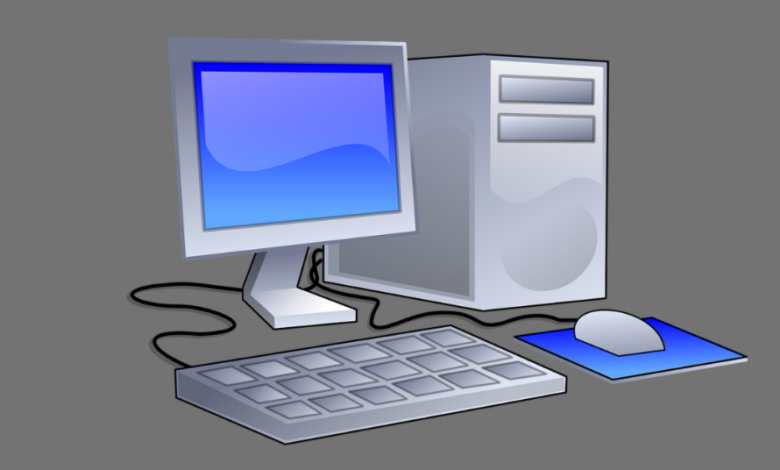Hardware Components Of Laptop | Complete List

A laptop is made up of various hardware components, including a Central Processing Unit (CPU), Random Access Memory (RAM), Hard Disk Drive (HDD) or Solid State Drive (SSD), Graphics Processing Unit (GPU), display screen, keyboard, touchpad, speakers, webcam, battery, and various ports for connectivity such as USB, HDMI, and audio jacks. The CPU, RAM, and GPU work together to perform the computations required to run the operating system and applications.
The HDD or SSD stores the operating system, software, and data. The display screen provides a visual interface for the user, while the keyboard and touchpad allow for input. The ports provide connectivity to other devices and peripherals, such as external hard drives, printers, and smartphones.
It is often challenging to comprehend all the hardware components of a laptop due to the compact space in which they are packed, as compared to desktops. The technicalities of a machine can be intriguing and fun to know, as well as assist in making more efficient use of the laptop and reducing dependence on store repairs for minor issues.
Hardware Components Of Your Laptop You Need To Know
Here is the list of internal hardware components of the laptop.
Motherboard

It is a large printed circuit board and has all other hardware components plugged into it through connectors. Important devices such as the processor, RAM, various ports, CMOS battery, capacitors, PCH, RTC Crystal, etc. are all attached to it. There are different motherboard sizes depending upon their specification. To put it in short, the motherboard is the communication backbone connectivity point between all other components of the laptop. Since, it is a crucial laptop component, you need to check it on our own or contact a technician in case of faults.
Hard Disc

It is a mechanical device with having disc and rotator. A hard drive stores data non-volatically, retaining it even when the laptop shuts down. The hard drive uses magnetic storage to keep the data intact, even when power is cut off.
It consists of a mechanical magnetic disc that rotates, and a read/writes head. It fits inside the laptop to prevent it from causing damage as it spins rapidly. Hard drives less in use these days because of better alternatives replacing them. They tend to get slow and affect the speed of laptops, but they are less expensive because of this their market hasn’t collapsed.
SSD-Solid State Drive

SSD is a rectangular solid device. It is a non-volatile storage device for comparatively new laptops. They are being used in place of mechanical Hard Disc Drives as they are far more efficient in terms of speed and performance. SSDs use a NAND flash-based memory chip which consumes less space, less time, and less energy since it doesn’t have mechanical moving parts. Despite being comparatively expensive, SSDs have managed to get a spike in consumption numbers because it offers a lot better performance than hard disc drives, which makes it worth the money.

As the name makes it obvious, the battery is the power supply unit of a laptop, enabling it to work when the direct power supply isn’t available. Laptop batteries typically use lithium-ion cells.
Factors such as processing power, battery health, and optimization determine the battery life of a laptop. Modern laptops offer excellent battery life and you can easily recharge them when necessary. A laptop has three main types of batteries: the CMOS battery, the Bridge battery, and the Main battery, which we will discuss in more detail later in the article. Laptops typically come with built-in speakers for a seamless audio experience. These speakers come in different qualities and configurations and also allow for the use of a microphone. Although the built-in speakers are convenient and sufficient for most users, you can plug in external speakers for enhanced sound quality.
Cooling Fans

The importance of a cooling system in laptops is not something to overlook, and a fan plays a crucial role as one of its components. As the machine works, its components get heat and it is important to regulate the temperature inside to prevent overheating. A fan, along with the heat sync and pipes, drives cool external air into the laptop and drives out the hot air present inside. Cooling is a really important part of laptop functioning and a fan plays a major role in it.
Optical drive

This laptop hardware component has been out of sight lately because it is no more in use. The optical drive allows the laptop to interact with discs such as CDs and DVDs. Although laptops these days do not come with built-in optical discs, you can opt to attach an external optical drive to put it to use.
BONUS INFORMATION ON HARDWARE COMPONENTS OF LAPTOP
- The CPU or Processor, which acts as the brain of the laptop, plugs into the laptop’s motherboard and takes charge of executing all instructions and processing commands.
- A PCH or Platform controller hub is a chipset on the motherboard. It succeeds the Intel Hub architecture which had the northbridge and southbridge. The PCH has the functions of both bridges along with a few more features such as cloaking.
- The CMOS battery is the battery that runs when the laptop is off. It provides just enough power for the computer to be able to update the date and time provided by the RTC crystal continuously.
- The bridge battery is the battery that comes to your rescue when you have to replace your laptop battery but don’t want it to shut down. The bridge battery provides enough power for the time you replace your laptop battery with a new one.
- The main battery of your laptop, as the name suggests, is the main power source and is fueling your machine as you read this.
- A lot of laptops have a backlit keyboard that enables the user to see the keys even in darkness.
Conclusion
When choosing a laptop, it is important to consider the hardware components that are most important to you. The CPU, GPU, RAM, storage, and display are all important factors to consider, and the best choice for you will depend on your individual needs and budget.
I hope this article covered all the necessary information regarding the internal hardware components of laptops. Do let me know in case of errors and updates. If you found this article informative, make sure to check the other articles on our site to learn more about technology.






